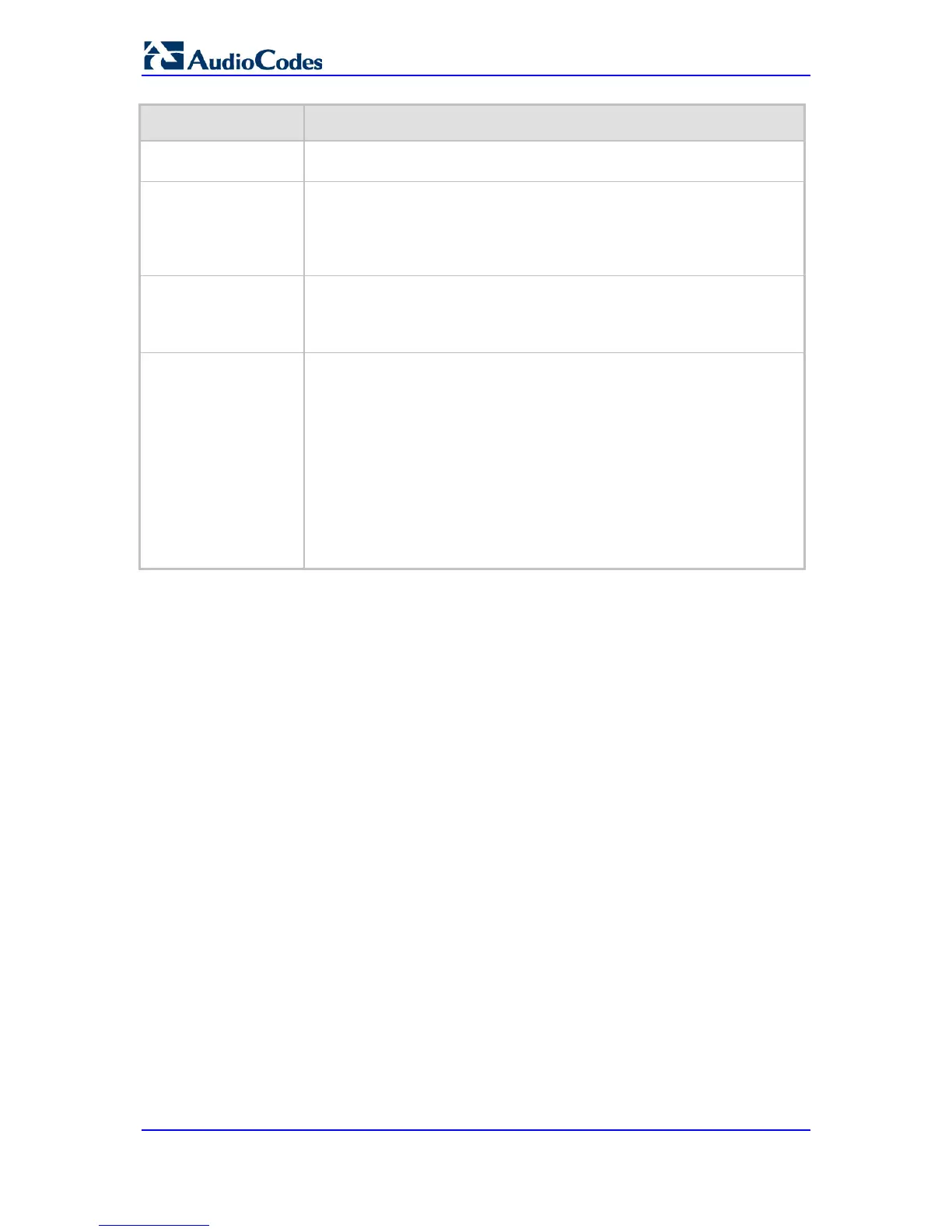Port ranges over 60,000 must not be used.
Number of Media
Session Legs
CLI: session-leg
[CpMediaRealm_Medi
aSessionLeg]
Defines the number of media sessions associated with the range of ports.
This is the number of media sessions available in the port range. For
example, 100 ports correspond to 10 media sessions, since ports are
allocated in chunks of 10.
Port Range End
CLI: port-range-end
[CpMediaRealm_Port
RangeEnd]
Read-only field displaying the ending port for the range of Media interface
UDP ports. This field is calculated by adding the 'Media Session Leg' field
(multiplied by the port chunk size) to the 'Port Range Start' field. A value
appears once a row has been successfully added to the table.
Is Default
CLI: is-default
[CpMediaRealm_IsDe
fault]
Defines the Media Realm as the default Media Realm. This default Media
Realm is used when no Media Realm is configured for an IP Group or SRD
for a specific call.
[0] No (default)
[1] Yes
Notes:
This parameter can be set to Yes for only one defined Media Realm.
If this parameter is not configured, then the first Media Realm in the
table is used as the default.
If the table is not configured, then the default Media Realm includes all
the configured media interfaces.
16.7.1 Configuring Quality of Experience per Media Realm
You can configure Quality of Experience (QoE) per Media Realm. This enables you to
monitor and analyze media and signaling traffic, allowing you to detect problems causing
service degradation. The device can save call information and statistics at call start, at call
end, or at specific changes in the call. The information is stored as call records on an
external server. The device connects, as a client, to the server using TLS over TCP.
You can specify the call parameters to monitor and configure their upper and lower
thresholds. If these thresholds are exceeded, the device can be configured to do the
following:
Sends RFC 2198 RTP redundancy packets on the call leg that crossed the threshold.
This enables the device to adapt to the changed network status. In this option, you
can also configure the redundancy depth. The channel configuration is unchanged if
the change requires channel reopening. Currently, this option is applicable only when
the monitored parameter is remote packet loss.
The device can be configured to monitor the following parameters on the local (i.e., at the
device) or remote side:

